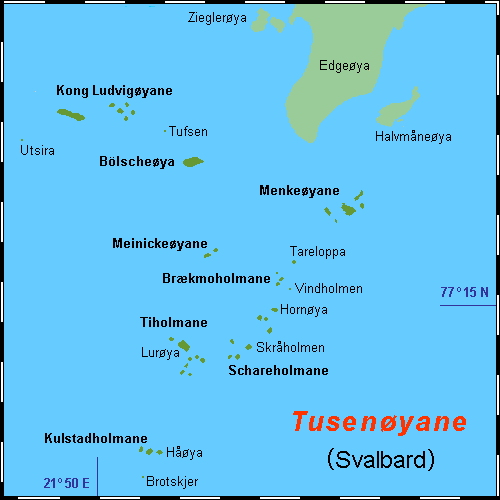|
Blåmåken
Blåmåken is the northeasternmost island in Menkeøyane, part of Thousand Islands, a Norwegian archipelago south of Edgeøya Edgeøya (), anglicised as Edge Island, is a Norway, Norwegian island located in southeast of the Svalbard archipelago; with an area of , it is the third-largest island in this archipelago. An Arctic island, it forms part of the Søraust-Svalbard .... References * Norwegian Polar InstitutPlace Names of Svalbard Database Islands of Svalbard {{svalbard-geo-stub ... [...More Info...] [...Related Items...] OR: [Wikipedia] [Google] [Baidu] |
Menkeøyane
Menkeøyane () is a small Norwegian island group south of Halvmåneøya, an island off the southeast coast of Edgeøya Edgeøya (), anglicised as Edge Island, is a Norway, Norwegian island located in southeast of the Svalbard archipelago; with an area of , it is the third-largest island in this archipelago. An Arctic island, it forms part of the Søraust-Svalbard .... The group includes Havella, Alka, Gassen, Teisten, Islomen and Blåmåken. They comprise part of Thousand Islands. The islands are named after the German cartographer and historical geographer Heinrich Theodor Menke (1819–92). The islands appear on the Muscovy Company's map (1625), one of which is labeled ''Heling I''. References * Norwegian Polar InstitutPlace Names of Svalbard Database*Purchas, S. 1625. Hakluytus Posthumus or Purchas His Pilgrimes: Contayning a History of the World in Sea Voyages and Lande Travells by Englishmen and others. Volumes XIII and XIV (Reprint 1906 J. Maclehose and sons). ... [...More Info...] [...Related Items...] OR: [Wikipedia] [Google] [Baidu] |
Thousand Islands (Svalbard)
Thousand IslandsDodd, G. J., G. P. Benson, & D. T. Watts. 1996. ''Arctic Pilot'', vol. 2. Taunton, UK: Hydrographer of the Navy, p. 225. () is a group of small islands south of Edgeøya. They form part of the Svalbard archipelago. The group consists of over forty islands and islets, including Brotskjer, Kulstadholmane, Utsira, Tufsen, Kong Ludvigøyane, Bölscheøya, Hornøya, Tiholmane, Meinickeøyane, Sletteøya, Schareholmane, Skråholmen, Brækmoholmane, Tareloppa, Vindholmen, and Menkeøyane. History The Dutchman Joris Carolus was the first to distinctly mark a group of small islands south of Edgeøya. The Muscovy Company's map (1625) showed a vague mass of islands as well, some labeled, such as ''Wester I.'', ''Beare Iland'', ''Heling I.'', and the ''Hopeless Iles.'' (perhaps Kong Ludvigøyane). The cartographers Gerard Valck and Peter Schenk the Elder Petrus Schenck, or Pieter, or Peter Schenk the Elder (baptized: 26 December 1660 – between ... [...More Info...] [...Related Items...] OR: [Wikipedia] [Google] [Baidu] |
Norway
Norway, officially the Kingdom of Norway, is a Nordic countries, Nordic country located on the Scandinavian Peninsula in Northern Europe. The remote Arctic island of Jan Mayen and the archipelago of Svalbard also form part of the Kingdom of Norway. Bouvet Island, located in the Subantarctic, is a Dependencies of Norway, dependency, and not a part of the Kingdom; Norway also Territorial claims in Antarctica, claims the Antarctic territories of Peter I Island and Queen Maud Land. Norway has a population of 5.6 million. Its capital and largest city is Oslo. The country has a total area of . The country shares a long eastern border with Sweden, and is bordered by Finland and Russia to the northeast. Norway has an extensive coastline facing the Skagerrak strait, the North Atlantic Ocean, and the Barents Sea. The unified kingdom of Norway was established in 872 as a merger of Petty kingdoms of Norway, petty kingdoms and has existed continuously for years. From 1537 to 1814, Norway ... [...More Info...] [...Related Items...] OR: [Wikipedia] [Google] [Baidu] |
Edgeøya
Edgeøya (), anglicised as Edge Island, is a Norway, Norwegian island located in southeast of the Svalbard archipelago; with an area of , it is the third-largest island in this archipelago. An Arctic island, it forms part of the Søraust-Svalbard Nature Reserve, home to polar bears and reindeer. An ice field covers its eastern side. The island takes its name from Thomas Edge (died 1624), an England, English merchant and whaling, whaler. It is seldom visited today and development of tourist facilities is forbidden by law because of its nature reserve status. History The history of Edgeøya's discovery has been a matter of dispute. Thomas Edge, writing in 1622, claimed the island was discovered by one of his ships in 1616. However, Joris Carolus, in a map published in 1614 and allegedly based on discoveries made by him the same year, shows what appears to be Edgeøya's south coast. Carolus showed the coastline split into two parts: "Onbekende Cust" (meaning "Unknown Coast" in Dutc ... [...More Info...] [...Related Items...] OR: [Wikipedia] [Google] [Baidu] |

